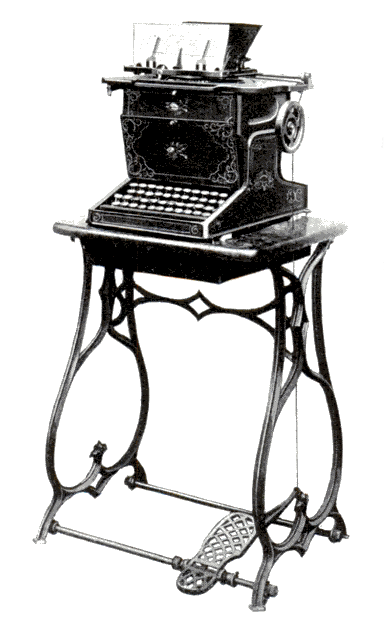The invention of various kinds of machines was attempted in the 19th century. Most were large and cumbersome, some resembling pianos in size and shape. All were much slower to use than handwriting. Finally, in 1867, the American inventor Christopher Latham Sholes read an article in the journal Scientific American describing a new British-invented machine and was inspired to construct what became the first practical typewriter. His second model, patented on June 23, 1868, wrote at a speed far exceeding that of a pen. It was a crude machine, but Sholes added many improvements in the next few years, and in 1873 he signed a contract with E. Remington and Sons, gunsmiths, of Ilion, New York, for manufacture. The first typewriters were placed on the market in 1874, and the machine was soon renamed the Remington. Among its original features that were still standard in machines built a century later were the cylinder, with its line-spacing and carriage-return mechanism; the escapement, which causes the letter spacing by carriage movement; the arrangement of the typebars so as to strike the paper at a common center; the actuation of the typebars by means of key levers and connecting wires; printing through an inked ribbon; and the positions of the different characters on the keyboard, which conform almost exactly to the arrangement that is now universal. Mark Twain purchased a Remington and became the first author to submit a typewritten book manuscript. (Read more)

To learn more about one of the longest lasting technologies, see next page.


